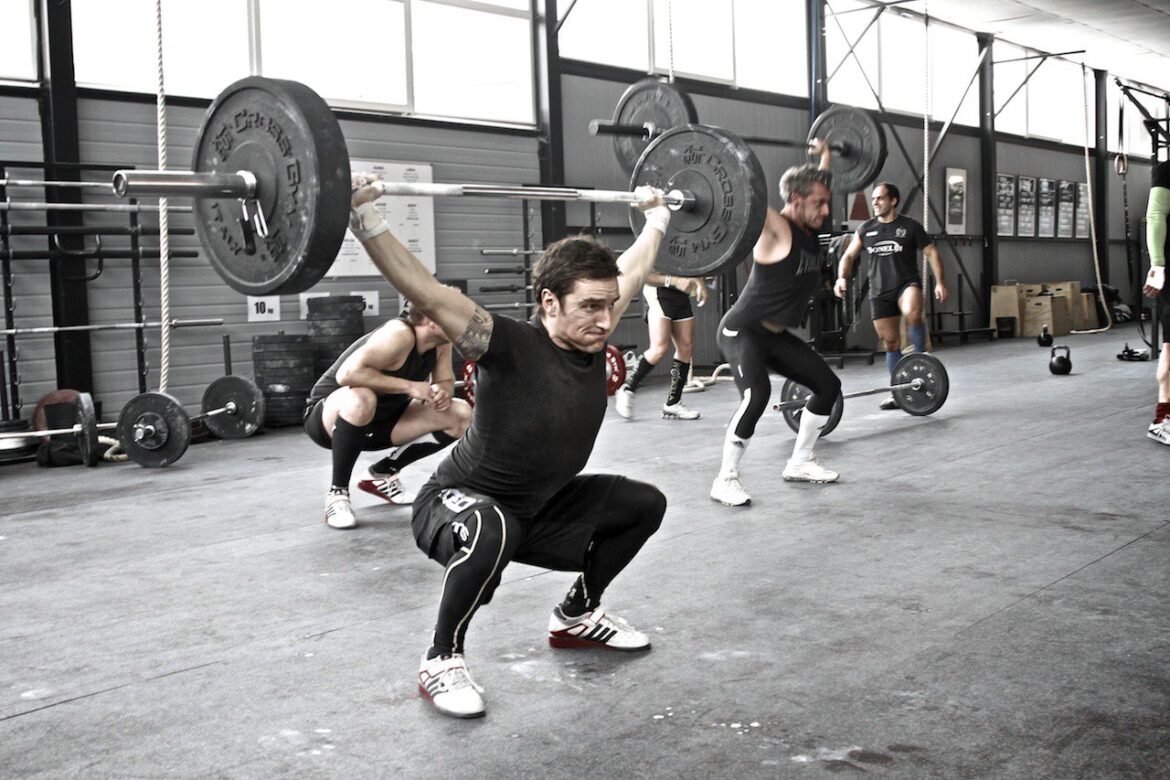Introduction
CrossFit, a high-intensity fitness program that combines elements of weightlifting, cardiovascular exercise, and functional movements, has gained immense popularity in recent years. However, a pressing question on the minds of many potential enthusiasts and skeptics alike is whether CrossFit is safe. This concern stems from the program’s reputation for pushing participants to their physical limits and its association with the risk of injury.In this exploration, we will delve into the safety aspects of CrossFit, examining the potential benefits and risks associated with this intense training regimen. We will consider the role of proper coaching, programming, and technique in mitigating injury risks, as well as the importance of individual readiness and fitness levels.
Additionally, we’ll explore the controversies and criticisms surrounding CrossFit’s safety record, seeking to provide a balanced and evidence-based perspective on this popular fitness phenomenon. By the end of this discussion, you will have a clearer understanding of whether CrossFit is a safe and suitable fitness choice for you, allowing you to make an informed decision about your fitness journey. CrossFit, a high-intensity fitness program that combines elements of weightlifting, cardiovascular exercise, and functional movements, has gained immense popularity in recent years. However, a pressing question on the minds of many potential enthusiasts and skeptics alike is whether CrossFit is safe. This concern stems from the program’s reputation for pushing participants to their physical limits and its association with the risk of injury.
In this exploration, we will delve into the safety aspects of CrossFit, examining the potential benefits and risks associated with this intense training regimen. We will consider the role of proper coaching, programming, and technique in mitigating injury risks, as well as the importance of individual readiness and fitness levels. Additionally, we’ll explore the controversies and criticisms surrounding CrossFit’s safety record, seeking to provide a balanced and evidence-based perspective on this popular fitness phenomenon.

Is it safe to do CrossFit every day?
While CrossFit workouts can be performed daily, it’s not generally recommended. You can expect to do your CrossFit training around two to five days a week.
CrossFit is a demanding and intense fitness program that places significant stress on the body. While it is possible to do CrossFit workouts every day, it is generally not recommended for most individuals.
Recovery: Adequate recovery time is crucial for muscle repair and growth. CrossFit workouts often involve heavy lifting and high-intensity movements that can lead to muscle fatigue and microtrauma. Without sufficient recovery time, the risk of overtraining and injury increases.
Variety: CrossFit workouts are designed to be constantly varied, incorporating different exercises and training modalities to prevent plateaus and overuse injuries. Performing the same high-intensity workouts daily may lead to overuse injuries and burnout.
Injury Risk: CrossFit is associated with a higher risk of injury compared to some other fitness programs due to the intensity and complexity of the movements involved. Rest days allow your body to heal and reduce the risk of injury.
Long-Term Sustainability: To maintain a long-term fitness routine, it’s essential to balance intensity with recovery. Overtraining and burnout can lead to a decreased desire to work out, making it harder to stay consistent with your fitness goals.
What age is good for CrossFit?
Maintaining Mobility Bodies wear down as we age; this is a fact of biology. However, when your body is in better shape, the aging process has less of a wear and tear than it would if your body has been poorly cared for. CrossFit is accessible to people of any age.CrossFit is a demanding and intense fitness program that places significant stress on the body. While it is possible to do CrossFit workouts every day, it is generally not recommended for most individuals.
Recovery: Adequate recovery time is crucial for muscle repair and growth. CrossFit workouts often involve heavy lifting and high-intensity movements that can lead to muscle fatigue and microtrauma. Without sufficient recovery time, the risk of overtraining and injury increases.
Variety: CrossFit workouts are designed to be constantly varied, incorporating different exercises and training modalities to prevent plateaus and overuse injuries. Performing the same high-intensity workouts daily may lead to overuse injuries and burnout.
Injury Risk: CrossFit is associated with a higher risk of injury compared to some other fitness programs due to the intensity and complexity of the movements involved. Rest days allow your body to heal and reduce the risk of injury.
Long-Term Sustainability: To maintain a long-term fitness routine, it’s essential to balance intensity with recovery. Overtraining and burnout can lead to a decreased desire to work out, making it harder to stay consistent with your fitness goals.
Is CrossFit good for beginners?
Is CrossFit suitable for beginners? The beauty of CrossFit is that it’s very scalable with a good coach .So no matter who you are or how beginner you are, you can take part. You just need an experienced coach to help you find your starting point.
CrossFit can be suitable for beginners, but it’s essential to approach it with the right mindset and guidance.
Here are some considerations for beginners interested in starting CrossFit:
Scalability: One of the key advantages of CrossFit is its scalability. Workouts and exercises can be adjusted to match an individual’s fitness level, making it accessible for beginners. A skilled CrossFit coach can tailor workouts to your abilities, ensuring a safe and progressive introduction to the program.
Coaching: Finding an experienced CrossFit coach or trainer is crucial, especially for beginners. A knowledgeable coach will teach you proper techniques, help you understand the fundamental movements, and guide you through workouts. They can also provide valuable advice on scaling workouts appropriately.
Safety: Safety should always be a top priority. CrossFit workouts can be intense, so it’s essential to learn and maintain proper form to prevent injuries. Beginners should start with lighter weights and gradually progress as they build strength and confidence.
Gradual Progression: It’s important not to push too hard too soon. CrossFit beginners should focus on gradually building their fitness level and conditioning over time. This approach reduces the risk of overtraining and burnout.
Consistency: Like any fitness program, consistency is key to seeing results in CrossFit. Commit to a regular workout schedule and listen to your body. Rest and recovery are essential components of your fitness journey.
Does CrossFit burn fat?
CrossFit workouts are high-intensity with exercises being performed in rapid succession, usually to beat the clock. It’s only after you’ve hit your target reps or time that you can take a break before trying something new and equally as challenging.Yes, CrossFit workouts can be effective for burning fat and promoting weight loss.
High Intensity: CrossFit workouts are known for their high-intensity nature. They often involve a combination of strength training, cardiovascular exercises, and functional movements performed at a vigorous pace. This intensity can significantly elevate your heart rate and calorie expenditure during and after the workout.
Metabolic Conditioning: Many CrossFit workouts are designed to improve metabolic conditioning. They include exercises like sprinting, rowing, and plyometrics that can boost your metabolism and enhance fat burning, even after the workout is over. This effect is often referred to as the “afterburn” or excess post-exercise oxygen consumption (EPOC).
Strength Training: CrossFit incorporates strength training exercises, such as weight lifting and bodyweight movements. Building lean muscle mass through strength training can increase your resting metabolic rate, making it easier to burn calories and fat throughout the day.
Variety: CrossFit workouts are constantly varied, which helps prevent plateaus and keeps your body challenged. This variety can lead to more effective fat loss by continuously engaging different muscle groups and energy systems.
Community and Accountability: Many CrossFit gyms have a strong sense of community and peer support. This social aspect can encourage consistency and motivation, which are essential for long-term fat loss success.
Is CrossFit good for girls?
A woman can totally go for bulk and get jacked with CrossFit. But you’re unlikely to hulk out without deliberate, consistent effort toward that goal. Without a specific bulking plan, CrossFit is more likely to improve your general fitness, trim body fat, and increase lean muscle definition.CrossFit is an excellent fitness option for women, just as it is for men. It offers a wide range of benefits that can help women achieve their fitness goals, whether those goals involve building strength, increasing endurance, losing body fat, or simply improving overall fitness and health.
Variety: CrossFit incorporates a variety of exercises and training modalities, which can keep workouts engaging and prevent boredom. This variety is particularly appealing to individuals who enjoy diverse forms of physical activity.
Functional Fitness: CrossFit emphasizes functional movements that mimic real-life activities. This focus on functional fitness can help women improve their everyday mobility, strength, and agility.
Strength Training: CrossFit includes weightlifting and strength training exercises. Contrary to the misconception that lifting weights will make women bulk up, strength training can help women build lean muscle, increase metabolism, and improve body composition.
Cardiovascular Fitness: CrossFit workouts often include high-intensity cardio elements, such as running, rowing, and jump rope, which can help improve cardiovascular fitness and burn calories.
Community and Support: Many CrossFit gyms have a strong sense of community and support. This can create a positive and motivating environment for women looking to achieve their fitness goals.
What do CrossFit girls eat?
Eat meat and vegetables, nuts and seeds, some fruit, little starch, and no sugar. Keep intake to levels that will support exercise but not body fat. These two sentences capture a nutritional approach that, when applied with our workouts, yields incredible health and fitness.The dietary guidelines you’ve mentioned, “Eat meat and vegetables, nuts and seeds, some fruit, little starch, and no sugar,” are often associated with the CrossFit community and are based on a diet commonly referred to as the “Paleo” or “Paleolithic” diet. This approach to nutrition emphasizes whole, natural foods and limits processed and refined products.Meat and Vegetables: The foundation of the diet consists of lean meats (such as chicken, turkey, lean beef, and fish) and a variety of vegetables. These foods provide essential proteins, vitamins, and minerals.
Nuts and Seeds: Nuts (like almonds, walnuts, and cashews) and seeds (such as chia seeds and flaxseeds) are good sources of healthy fats, fiber, and additional protein.
Some Fruit: While fruit is generally encouraged, the diet suggests moderating fruit consumption due to its natural sugar content. Fruits like berries, apples, and citrus fruits are often favored for their nutritional value.
Little Starch: This guideline suggests limiting starchy foods, such as bread, pasta, rice, and potatoes, which can have a high glycemic index and may lead to blood sugar spikes.
No Sugar: The diet advocates avoiding added sugars and processed foods that contain refined sugars. This includes sugary drinks, candies, and many packaged snacks.
Can I do CrossFit without eating?
Training on an empty stomach negatively affects sports performance if: Glycogen stores are very low due to fasting for more than 16 hours or very low carbohydrate diets. the individual is not adapted to training on an empty stomach.
Energy Levels: Without proper nutrition, your energy levels may be significantly lower during a CrossFit workout. This can affect your performance, making it more challenging to complete high-intensity exercises and potentially reducing the effectiveness of your training.
Blood Sugar Levels: Going into a workout on an empty stomach can lead to low blood sugar levels (hypoglycemia), which can cause dizziness, fatigue, and even fainting. Maintaining stable blood sugar levels is essential for optimal performance and safety during exercise.
Muscle Preservation: During an intense workout, your body may turn to muscle protein as an energy source if there are no readily available carbohydrates. This can potentially lead to muscle breakdown and hinder your fitness goals.
Recovery: Proper nutrition after a workout is crucial for recovery and muscle repair. Failing to eat after a workout can slow down the recovery process, leaving you feeling fatigued and sore for longer periods.
Hydration: Eating can also help stimulate thirst, leading to better hydration during exercise. Dehydration can negatively impact your workout performance and overall health.
How long does it take to see results from CrossFit?
This is when people will start noticing and ask what you’re doing that’s new! You will be significantly stronger than you were on Day One. Your energy will be up, your cardio fitness will be better and you’ll be on your way towards dialing in healthy habits to last a lifetime.The time it takes to see results from CrossFit can vary significantly from person to person based on several factors, including your starting fitness level, consistency, and adherence to a balanced diet.
Here’s a general timeline of what you might expect:
Immediate Changes (Weeks 1-4): In the first few weeks of CrossFit, you may start to notice immediate changes in your energy levels, mood, and overall well-being. Many people report feeling more energized and motivated shortly after starting. Some initial improvements in strength and endurance may also become noticeable.
Strength and Performance (Months 1-3): Over the first few months, as you consistently engage in CrossFit workouts, you can expect significant improvements in strength, endurance, and overall fitness. You may lift heavier weights, perform exercises more efficiently, and notice positive changes in your body composition. These improvements are often noticeable both in the gym and in your daily life.
Body Composition (Months 3-6): After several months of regular CrossFit training, you may start to see visible changes in your body composition. You may notice increased muscle definition and reduced body fat, particularly if you’re following a balanced diet in conjunction with your workouts. Results can vary, but many individuals experience significant transformations in this time frame.
Long-Term Benefits (6 Months and Beyond): Beyond the initial six months, the benefits of CrossFit continue to accumulate. Your cardiovascular fitness will likely continue to improve, and you’ll become more proficient in various movements and exercises. Long-term adherence to CrossFit can lead to lasting changes in your health, fitness, and lifestyle.
Increased Strength and Stamina: CrossFit workouts are designed to challenge your strength and stamina. As you progress, you’ll notice improvements in your ability to lift weights, perform bodyweight exercises, and sustain high-intensity efforts.
Learning New Skills: CrossFit incorporates a variety of movements and exercises, some of which may be entirely new to you. Expect to learn and practice techniques for weightlifting, gymnastics, and cardiovascular exercises.

Conclusion
The safety of CrossFit as a fitness regimen is a multifaceted topic. CrossFit can offer numerous benefits, including improved strength, endurance, and overall fitness. However, it is essential to approach it with mindfulness, preparation, and proper coaching. CrossFit safe when participants adhere to key principles. These include starting at an appropriate fitness level, engaging with experienced coaches, maintaining proper form and technique, allowing for adequate recovery, and listening to one’s body.
The program’s scalability allows it to be accessible to individuals of diverse backgrounds and abilities, enhancing its safety and inclusivity.Yet, CrossFit has also faced criticism for its association with a higher risk of injury, particularly when exercises are performed without adequate supervision or when participants push themselves too hard. It is crucial for individuals to recognize their limits and prioritize safety over ego.
Ultimately, CrossFit can be safe and effective when practiced sensibly and with proper guidance, offering a pathway to improved fitness and overall well-being. Each individual should assess their own fitness goals and consult with qualified professionals to determine if CrossFit aligns with their unique needs and abilities.

